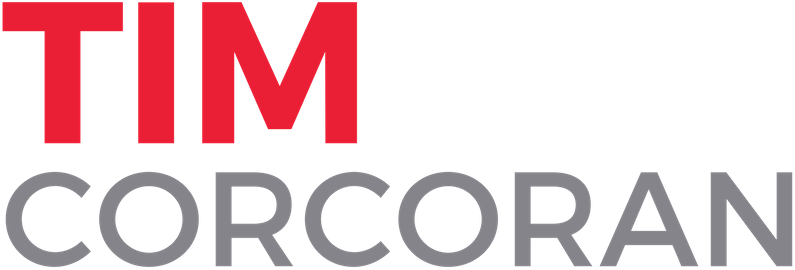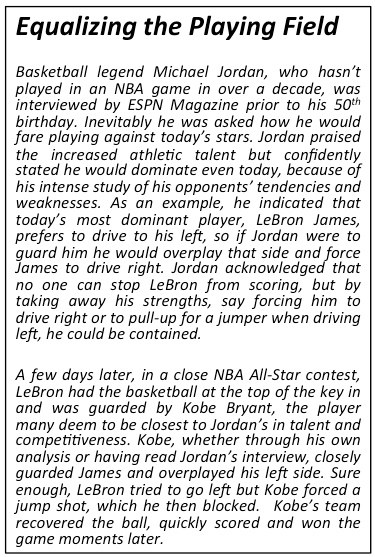The Changing Definition of Value: What Matters Most to In-House Counsel
/The rules have changed. Law firm partners worldwide reached professional maturity in a much simpler world: One delivered a quality work product and everything else fell into place. Clients were satisfied, lawyers were engaged in thought-provoking work, associates received good training and generous, albeit hard-earned, revenues and profits ensued. This worked. Until it didn’t.
As with all extraordinary ecosystem disruption, many are reeling, casting about for an anchor in the storm. Partners face seemingly conflicting demands from clients who require quality work product but refuse to pay premium rates. To the clients, however, and particularly to in-house counsel, there is little conflict. The definition of quality has simply been redefined to encompass the manner in which legal services are delivered, and not merely the price or the outcome. And clients are happy to describe what this means to them.
“We’re in the midst of consolidating the panel of counsel that we use. We’ve identified five decision criteria that reflect our values: the firm’s relation- ship to us, including years of service and any customer relationship we have; billing rates for partners and associates; diversity; approach to resourcing and budgeting; and innovation,” reports Anne Sonnen, deputy general counsel and chief administrative officer for BMO Financial Group. Marilyn McClure-Demers, associate vice president and associate general counsel of corporate and intellectual property litigation at Nationwide Insurance, offers a similar robust definition: “Our top metrics are result, diversity and cost- efficiency, but this is closely followed by communication. This refers to timeliness, understanding urgency, managing expectations and helping us avoid surprises with our business management.” James Partridge, formerly chief counsel for outside counsel relations with Ally Financial Inc., and now consultant with Duff & Phelps, continues the theme: “We developed a scorecard to capture the metrics the company values. These include service quality, program delivery, cooperation and teamwork, communication, financial management and price, which is really a component of financial management.”
To in-house counsel, quality lawyering is merely table stakes. It’s how outside counsel manage the relationship that matters most. “Outside counsel can be insensitive to the amount and frequency of communication that the client needs during the course of a matter,” laments Ted Banks, a partner with Scharf Banks Marmor and formerly chief counsel of global compliance for Kraft Foods. This is echoed by Partridge, who notes how exceptional good communication can be. “One firm impressed us by going well beyond our expectations for normal communication, providing a monthly update on all matters whether we asked for it or not, offering unsolicited insights on litigation techniques, jury pools, judges and the like. This was better than what the majority of our other outside counsel were doing. I liked this approach so much that I worked to turn it into an early case assessment process and asked other outside litigation counsel to adopt the approach.”
Many in-house counsel report that a well-crafted project plan and an accompanying matter budget are critical to managing expectations with business leaders. Yet, law firms tend to resist such requirements, believing that the ebb and flow of complex matters, and certainly the outcomes, are beyond their control. While this is true to some extent, reports Banks, experienced lawyers can still provide directional guidance based on deep experience: “If you’re using a law firm that holds itself out to be an expert in a certain area of law, you expect them to provide a budget for a matter. What most in-house lawyers are looking for is a budget that gives an order of magnitude. Is this going to take 10 hours or 50 hours or 200 hours?” For law firm partners who fear encroachment from low-priced competitors, budgets based on a nuanced understand- ing of the various decision trees involved in a complex case can clearly differentiate subject matter expertise from those eager to win on price alone.
Of course, price is still quite important, which is why “cost-effective delivery of legal services” is a critical component of the outside counsel selection process used by CIT, a bank holding company, according to Bob Ingato, executive vice president and general counsel. This is defined, in part, by being “creative and flexible in designing and accepting alternative fee arrangements [AFAs] that align our interests and allow for shared success.”
While some law firm partners may view AFAs as synonymous with “low cost,” in-house counsel, not surprisingly, have a different perspective. Most wish their outside counsel would take the initiative and offer more options. According to McClure-Demers of Nationwide, “By and large we don’t see proactive innovation. We find ourselves encouraging outside counsel to embrace creative value-based billing arrangements and opportunities.” But outside counsel don’t have to blaze this trail on their own. Sonnen avers that the best arrangements are developed collaboratively: “Many of our in-house team, along with outside counsel, have attended the ACC Value Challenge workshops, and as a direct result, we are piloting several different types of AFAs and having better conversations with our counsel about value. Cost is one factor to consider in determining value, but predictability and outcomes are also key.”
Ingato says CIT isn’t only looking for firms with the lowest hourly rates. Rather, it seeks “competitive rates compared with the efficient delivery of quality legal services.” In-house counsel are increasingly analyzing fee trends and applying bench- marking to identify which tasks can now be performed routinely by multiple providers and which, according to the immutable laws of economics, should there- fore decline in price. Such sophisticated analysis has become much easier in recent years as new tools have emerged. Sonnen reports that at BMO “we’re incorporating a new electronic billing system, TyMetrix, that can provide far more analytics and support for AFAs.”
And these tools capture more than merely financial metrics. Partridge indicates that “Ally regularly surveys each of its in-house lawyers to collect feedback. It imports the metrics into our Sky Analytics system, and then conducts financial and non-financial benchmarking. When a new matter arises and Ally needs to retain a firm, its lawyers can then query the database to find a firm that meets certain financial and non-financial criteria.” Over time, he reports, “non-financial measures grew to become a significant factor in [outside counsel hiring] decisions.”
According to Banks, solid relationships are based on more than price and out- comes. “If it’s litigation, you win some and you lose some, and most clients understand that. It is when the outside counsel presents an overly rosy assessment of a case, or fails to communicate developments that affect the likely outcome, that the relationship will suffer long-term damage.” The mandate to “learn my business” results from a common frustration by in-house counsel. As Peter McDonough, general counsel of Princeton University, says, “Higher education is different. Period. The lawyers who have made the deep and consistent effort to understand it, including the faculty-centric nature of it, and—very importantly—know how to avoid corporate-speak and truly use the language of a higher education environment without faking it have a huge leg up. Not getting that right is a deal-breaker.” This mind-set is shared by Banks, who pays careful attention to his style of communication now that he sits on the other side of the table: “I try to make sure that what- ever work product is delivered, is delivered in the format that the client wants. Some want to have a personal conversation, some want formal memos, some want results in PowerPoint. Clients generally don’t want highly formalistic structures of communication full of lawyer-speak.”
A key and growing imperative for many businesses is diversity. Many in-house counsel, Sonnen of BMO included, expect their law firms to value diversity as well. “Diversity to BMO is more than a social responsibility; it’s a business case,” she says. “There is a direct link between our diversity profile and our financial performance. Shareholder earnings are enhanced when we employ a diverse work- force, and we expect our key suppliers to reflect and support the same rationale.” At Nationwide, confirms McClure-Demers, diversity is also a critical initiative that matters to everyone, including the CEO. “Our outside counsel voluntarily submit their diversity metrics today, and our chief legal officer reviews this at least quarterly with our CEO to discuss our progress. We’ve implemented a new program recognizing diversity in our outside counsel. We’re a supporter of NAMWOLF [the National Association of Minority & Women Owned Law Firms] and will also be recognizing a NAMWOLF firm in this most important area.”
Firms that get it right will earn more business. McDonough confirms that “if a lawyer in a firm has wonderfully served us, we’ll follow that lawyer. Yet, if that lawyer’s colleagues also served us well, and we appreciated the firm on other levels—such as a real service mind-set, a real understanding of higher education, quality and consistency, pleasant people, etc.—we will try to also keep his or her former colleagues, and maybe even the firm in general, specifically in mind as opportunities develop.” McClure-Demers says Nationwide is eager to recognize outside counsel for outstanding efforts. As she indicates, “One of our outside counsel took the initiative to combine their institutional knowledge of our business, information from matters they were working on for us and insights looming on the horizon, and recommended a two-year litigation strategy to address these issues. The result clearly addressed our needs, but it also helped set new law and helped our industry as a whole. Our business management loved it!” The firm earned not only more legal work, but became more involved in legal strategy.
The legal marketplace is indeed changing, and law firm partners should take heed of the evolving definition of value and what matters most to in-house counsel. For every client seeking a low-cost provider, many others are seeking law firms who understand their business, who communicate frequently, who manage expectations through budgets and project plans, and who acknowledge the importance of a diverse workforce. Law firms getting this right enjoy loyalty and repeat business, the most critical ingredient for long-term profitability. What matters to your clients? What do they value? Don’t guess. Ask them.
This article was first published in ABA Law Practice magazine, Vol. 39, No. 6, November/December 2013, p. 46. Reprinted with permission. This information or any portion thereof may not be copied or disseminated in any form or by any means or downloaded or stored in an electronic database or retrieval system without the express written consent of the American Bar Association.
Timothy B. Corcoran delivers keynote presentations and conducts workshops to help lawyers, in-house counsel and legal service providers profit in a time of great change. To inquire about his services, contact him at +1.609.557.7311 or at tim@corcoranconsultinggroup.com.




